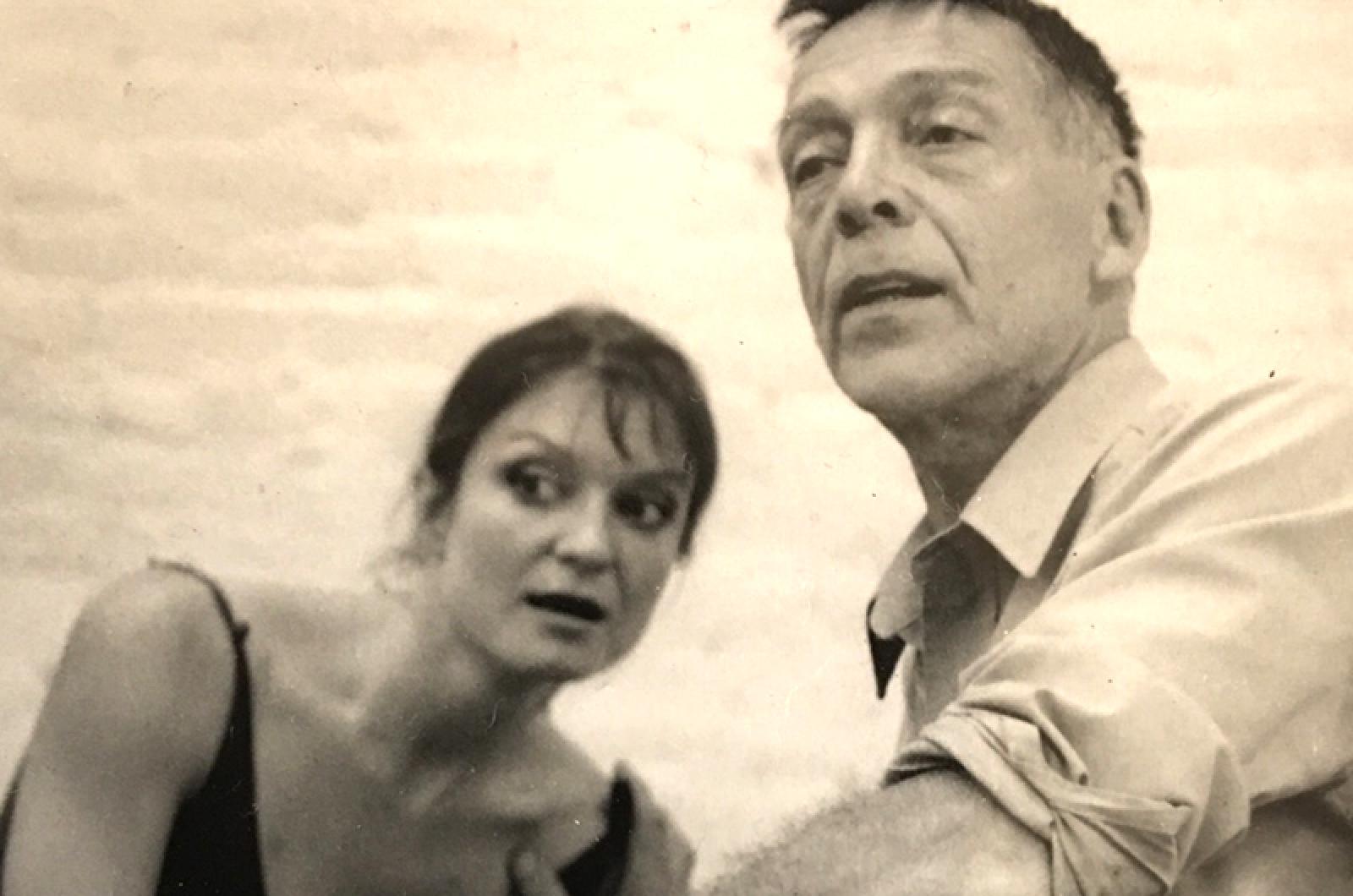As I boarded the Peter Pan bus for the six-hour journey from Woods Hole to New York city I was both excited and forlorn. I was on my way to meet with my family, not my biological family, but my Taylor family. We were gathering to mourn the passing of our celebrated patriarch Paul Taylor.
We were adopted into this family by audition.
Turnover was rare in the Taylor Company of 16 dancers, so auditions were also rare. Often it was not the best or the finest dancer who won the audition. Instead it could be something specific Mr. Taylor was looking for. Maybe he wanted a dancer who was different from what he already had, one similar to the one leaving, or a dancer who brought new nuance to his movement and could add a fresh color to his palette.
I humbly confide that at age 22, when I auditioned with over 350 other women for one available spot, I was far from the best.
I had left my training ground at the North Carolina School of the Arts one year before and paid my rent by waiting tables and dancing for small companies while on scholarship at the Martha Graham School. A friend suggested I go to the Taylor audition. Having been rejected by two other companies that week I was prepared to be cut early but figured it would be an interesting experience and I would get to see a lot of friends.
After surviving many cuts and a few more call backs, I found myself among one of the final four dancers. Although mentally and physically drained I began to feel a bit more optimistic. When he finally chose me, I nearly fell over in disbelief.
The ecstasy was soon replaced when I realized I had only begun to sweat. The challenge I saw in front of me as I watched the other dancers in awe quickly eclipsed any relief or joy experienced after winning this dance lottery. I had so much to learn. I did not fully understand the gifts I received in those first few months.
No longer needing to supplement my dancing income with a day job was reason enough to claim victory. But getting paid to dance Paul’s work was a goal I had not dared to dream.
As a Taylor dancer, you could find yourself expressing a full range of emotions in the highest physical manner during any given performance. Paul would have us move as if we were having tantrums jumping all around the stage in one dance, create a soft gentle waltz in the next, then finish the evening in a silly comedy. We had the privilege of wearing costumes and working with Tony-award winning designers. My legs would burn from Paul’s powerful movements requiring them to be strong as steel, changing levels as fast as a rabbit without any indication of effort in the torso which was committed to gesture and expression.
It gave me enormous pride to perform Paul’s dances around the world. The company had the honor of dancing in some of the most prominent theatres including The Palais Gariner, Sydney Opera House, Teatro Municipal in Rio De Janiaro and Sadler’s Wells in London to name a few. We had to get extra pages inserted into our passports to make room for the stamps.
The thrill of sharing the work was balanced by the endeavor of creating the work, which could be painful and humiliating. We took turns as targets and witnesses to Paul’s constant haranguing so it was easy to forget the pressure he was under working in the shadow of his last acclaimed creation. This was the early 1980s; he arguably created the bulk of his best work from 1975 to 1990. He made two dances a year and his work was expected to be no less than a tour de force each year as it was anxiously awaited by the cultured eyes of New York city audiences and critics. We felt his anxieties not through his vulnerability, which he would never reveal, but through his impatience and dissatisfaction. He expected perfection, or at least his ideal of perfection.
Like elite athletes, dancers’ careers are short. You must work hard and take advantage of every precious moment. It is impossible to recreate the thrill of bringing the house down while dancing on stage with your best friends. But in the end we are reminded of our mortality and our bodies begin to protest. A large part of the gift has an expiration date and we have to face the time when we must pass it on to a younger candidate. We now sit on the other side at the audition and help choose our new, younger siblings.
Although the intensity of those gifts may have been temporal experiences, thrills in the moment, they remain visceral and continue to dwell in my heart and mind as treasured memories of a lifetime. Now, almost two decades later, I’ve come to realize the most valuable and enduring gift I received on that warm spring day was being adopted into the Paul Taylor family.
Some dancers have gone on to do amazing things after leaving the stage, but it is an odd career trajectory. We look back on our golden years while sharing stories with the next generation through tears and laughter. They watch us on video and we watch them live. We mutually admire each other through movement. We see our departed brothers and sisters in the jumps and gestures of the dances Paul created for them and we understand that they are still with us inside the dances. They give us strength and we carry their torch to the next generation and then the next.
Sandra Stone-Benjamin lives in Edgartown.







Comments (4)
Comments
Comment policy »